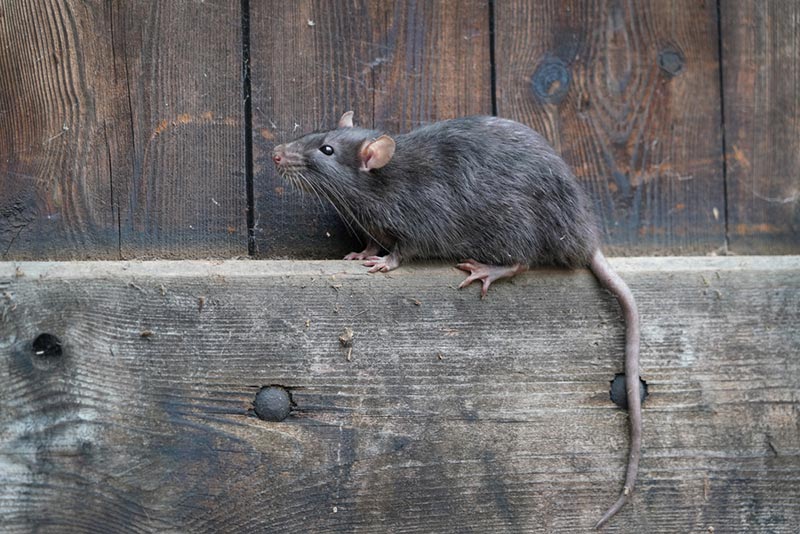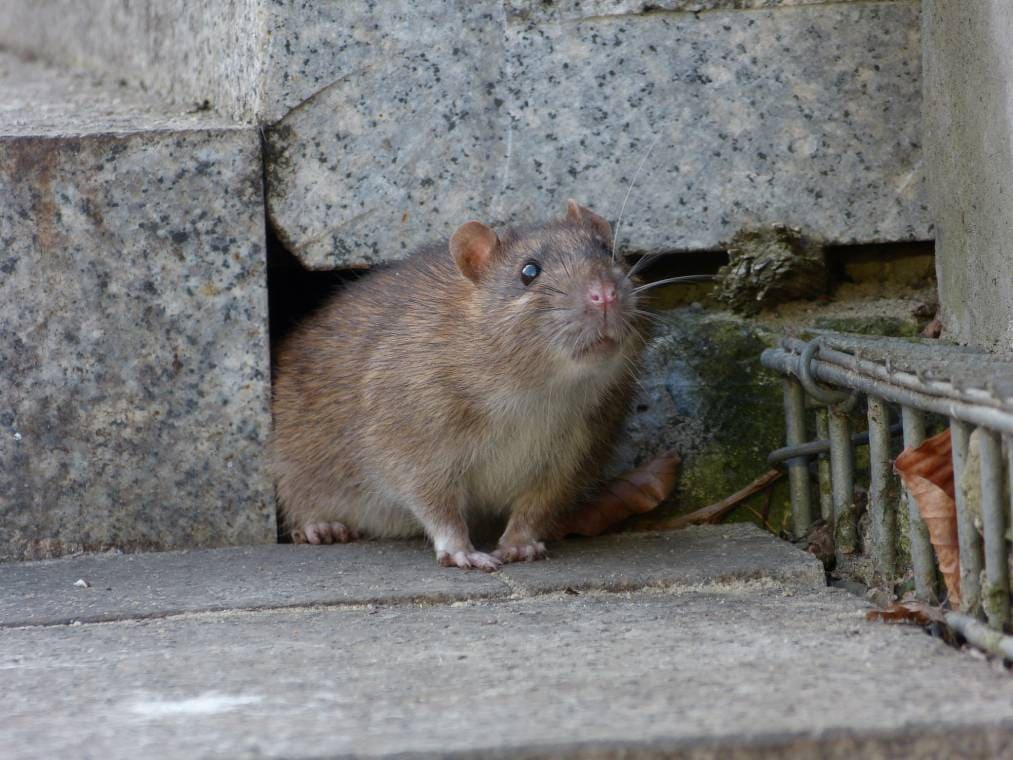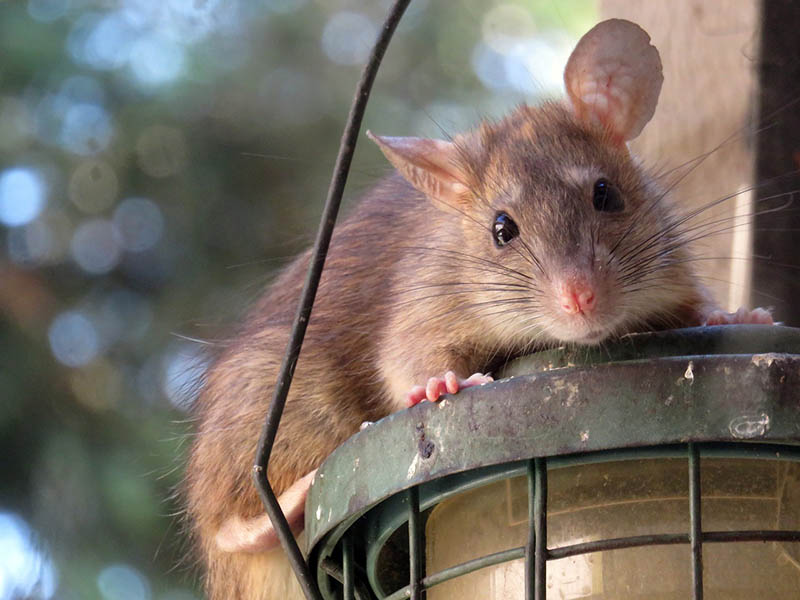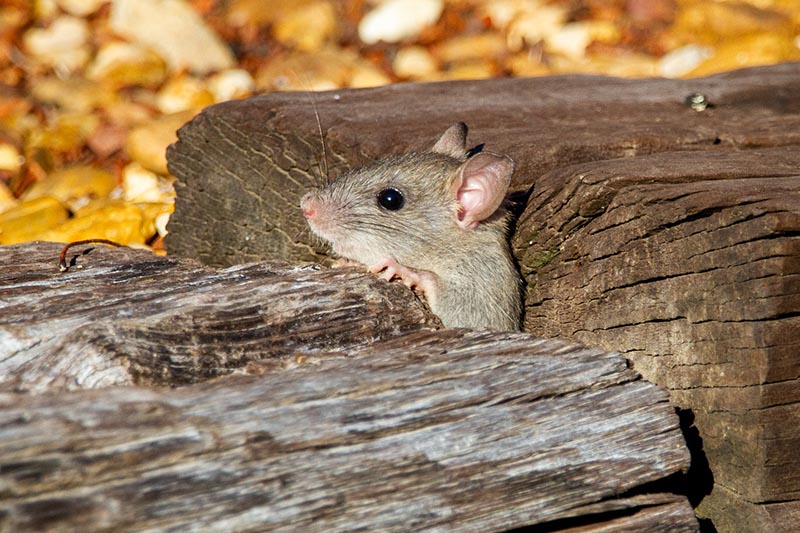Rats in Massachusetts: Types, Facts, and Tips for Homeowners
-
Pete Ortiz
- Last updated:

Climate change, urbanization, and even COVID are creating a perfect storm for increasing rodent populations through northern states, and Massachusetts appears to be directly in the eye of it.
There’s no doubt about it—Massachusetts has a rat problem. With expanding suburbs and milder winters, rats enjoy better weather for year-round activity and a more abundant food supply in city dumpsters.
A glance at the numbers reveals there’s no place that rats would rather live. According to American Housing Survey data1, 22.6% of Massachusetts residents spotted a rat or mouse in their home in 2021. That’s nearly double the 11.9% national average!
It pays to play it safe no matter where you live in the Bay State. Learn about the common rat species in Massachusetts and how you can keep them from becoming a problem in your neighborhood.
The Types of Rat Found in Massachusetts
1. Norway Rat (Brown Rat)

| Scientific Name: | Rattus norvegicus |
| Size: | 7–9.5” |
| Description: | Brown fur, blunt nose, tails shorter than bodies |
Norway rats are the most prevalent rat in North America. The species originated in Asia and became widespread across Europe, North America, and essentially the entire planet in the 18th century due to trade. While Norway rats are one of the most common pests in Massachusetts, specific breeds are common in laboratories as test subjects and in homes as pets.
You’ll find Norway rats anywhere humans live, commonly infesting the sewers, subways, and drains of urban environments. They scavenge on discarded food, preferring cereal grains, but will invade homes if they can raid the pantry or find food on counters and floors. Their diet is diverse, and they’ll eat crops, seeds, nuts, and even small animals if it’s what is available.
Nesting Habits
Outdoors, Norway rats build burrows around water sources, often along riverbanks and railroad embankments. In populated areas, they might establish them in the yard under wood piles, garbage, or concrete slabs. Burrows usually go a foot deep or further, featuring a main entrance and an emergency exit.
Norway rats will typically come out of their burrows at night to search for food, as they have poor eyesight and the cover of darkness offers protection from predators. Daytime rats might indicate an overgrown colony, as inferior males in their hierarchical system often feed when the dominant males are inactive.
Norway Rats in the Home
Norway rats are capable climbers but are nowhere near as agile as the smaller black rat. They tend to stay out of high-up places to avoid the risk, and in the home, you’ll be more likely to find them on the ground level or in crawl spaces and basements.
A rat infestation can be hazardous to the health and safety of the home. Norway rats are fastidious groomers, but they carry numerous diseases, such as trichinosis, salmonellosis, jaundice, and rat-bite fever. Ticks and fleas can also attach to Norway rats and travel into the home.
Norway rats aren’t threats to only the food sources in the home. Their teeth grow non-stop, so to prevent them from overgrowing their mouths, rats have to gnaw constantly, and they’ll do so on nearly anything they can find. In the home, that can include door frames, pipes, wood framing, and even electrical wires, potentially causing significant structural damage and house fires.
Massachusetts has an ongoing Norway rat issue. Household infestations began surging during the pandemic as businesses shut down. With limited resources from restaurants, shops, and grocery stores, rats descended upon residential neighborhoods.
With a sixth of the city built on a landfill, Boston is no stranger to rat surges. But Norway rats are becoming significantly problematic in nearby areas such as Cambridge and Somerville and further off cities like Worcester.
Airing of grievances and resolutions over increasing infestations are now frequent features of city council meetings across the state. Local governments are taking more aggressive action to bait, trap, and study rodents, and citizens are mobilizing to do their part in reducing the scourge.
2. Roof Rat (Black Rat)

| Scientific Name: | Rattus rattus |
| Size: | 5–7” |
| Description: | Black fur, pointed nose, large ears, tails longer than bodies |
Less adaptable than the Norway rat, the roof rat is much less common in Massachusetts and the Northeast than in the southern states. Also called ship rats, roof rats are known to appear in coastal areas, with isolated infestations occurring as they arrive on boats. Massachusetts residents typically won’t see them if they’re more than 100 miles inland from any coastal or river ports where the rats might appear.
Roof rats can be pests like Norway rats but display different habits. They have a broad diet like their larger relatives, often becoming agricultural and garden nuisances, eating through citrus and other fruits, vegetables, nuts, and ornamental plants. Small animals will do in a pinch, and left-out food in the home is a prime target.
Nesting Habits
Roof rats are more agile than Norway rats and tend to inhabit high-up places like trees and vine-covered fence tops. They are unlikely to build burrows around the home. Using their long tails for balance, they can run on precarious power lines, tree branches, and fences to get into houses, where they commonly nest in attics.
An infestation of roof rats may be apparent from sounds and signs of activity in the home’s upper levels. You can often distinguish them by their feces, which are more pointed on the ends than the Norway rat’s capsule-shaped droppings. In terms of damage, roof rats are no less of a concern. They have a similar need to gnaw, with extreme infestations leading to extensive damage, and will spread disease as they travel in search of food.
Preventing Rats in Massachusetts
Norway rats and roof rats are surprisingly capable home invaders. Roof rats can fit through holes about ¾ inch in diameter. At the same time, filling even the smallest holes may not be enough to keep a determined rat outside. Cockroaches, ants, and other bugs may not be able to penetrate a caulk-filled hole, but a rat’s jaws and claws can easily work through soft materials.
To keep rats out of the house, consider these helpful preventative tips:
- Check trash bins for holes and gaps in their seals
- Clean up the clutter that rats may try to live in
- Fill gaps in weatherstripping around windows and doors
- Plug small foundational holes with steel wool, and use silicone caulk to hold it in place
- Fill large holes with cement, metal sheeting, or hardware cloth
- Eliminate water sources from yards, including bird feeders, buckets, piles of debris, and poor-draining areas
- Keep wood piles at least 100 feet from the home and raise them at least one foot off the ground
- Remove overgrown vegetation and leaf piles from around the home
- Fix leaky plumbing fixtures and reduce other potential water sources in the home
- Store food in airtight heavy-duty plastic or glass containers
- Clean dishes, sinks, counters, and floors every day

If roof rats are common pests in your location, you may need to take additional precautions. These rats will follow utility lines and overgrown vegetation to access the roof. Consider the following measures if you’re in a coastal area with frequent roof rat sightings:
- Fix gaps in flashing, shingles, and siding
- Add metal mesh covers to chimneys and vents
- Trim back overhanging trees
- Add plastic sleeves to utility lines
Keep your garage and exterior shelters in mind too. Rats in the garage will continue to gnaw, and your vehicle, tools, and stored equipment could instantly become riddled with damage.
Baits can be an effective control technique if you already have rats, but they are extremely cautious around unexpected or unknown food sources. They’ll often avoid traps if you use the wrong kind of food, other food is available, or other rodents have died in that area. If you start seeing rats around the house, the safest bet is to call an exterminator as soon as possible.
Conclusion
House rats in Massachusetts are becoming more and more of a problem. American Housing Survey data shows that Boston’s rat sightings increased from 16.7% in 2013 to 21.6% in 2021, while the state’s rate has jumped three percentage points since 2017. It’s incumbent on all residents to play their part to protect themselves and their neighbors, reduce rat populations, and create safer, healthier communities.
Featured Image Credit: Holger Kirk, Shutterstock
Contents


